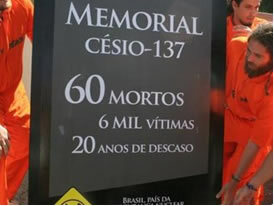The half-life of a radioactive element is the time span in which a sample of this element is halved. This time interval is also called the semi-disintegration period.
As radioactive elements disintegrate over time, their quantity and activity will reducing and, consequently, the amount of energy emitted by it, due to radioactivity, is also reduced.
An interesting feature of radioactive elements is that because of the disintegration they undergo, their mass is reduced; in periods of semi-disintegration, the mass is halved, leaving still the other half to disintegrate, which will also go through the period of semi-disintegration, and so on. And this process happens repeatedly in such a way that the mass is reduced, but it never reaches zero.
Do not stop now... There's more after the advertising ;)

Mass ratio - half-life
M = residual mass (kg)
Mo = initial mass (kg)
X = number of half-lives
The expression quoted above allows us to see that radioactive elements last forever.

The insecurity regarding cesium 137 (responsible for the accident
in Goiânia) may be associated with its infinity.
By Frederico Borges de Almeida
Graduated in Physics
Brazil School Team
Modern physics - Physics - Brazil School
Would you like to reference this text in a school or academic work? Look:
ALMEIDA, Frederico Borges de. "Half life"; Brazil School. Available in: https://brasilescola.uol.com.br/fisica/meiavida.htm. Accessed on June 27, 2021.


